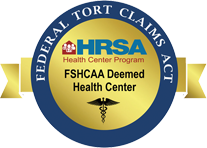Bad dreams happen to all of us. Bad dreams can be disturbing but we usually sleep through them. Sometimes we can remember the theme of the bad dream, the storyline, or images for it. Nightmares wake us up and we can usually recall all the details of them. Night terrors induce panic or terror causing the dreamer to scream, sleepwalk, or frantically thrash in bed. The child may appear awake but is still asleep.
Night terrors are considered a parasomnia, which is an undesired occurrence during sleep. They are a disorder of arousal, occurring during the deepest stage of non-rapid eye movement sleep. They affect almost forty percent of children. Most will out-grow the night terrors by their teenage years.
The third to first half the night is when sleeps terrors generally occur. Symptoms of a night terror include: frightening scream or shout, stare wide-eyed, sitting up and appearing frightened, sweating, heavy breathing, kick and thrash, racing pulse, flushed face with dilated pupils, hard to awake, confusion if awakened, little or no memory of the event the next day, and possibly getting out of bed to run around the house or possible aggressive behavior if restrained.
There are various factors that can contribute to sleep terrors. These include fever, sleep deprivation, extreme tiredness, travel or sleep interruptions, restless leg syndrome, stress, sleep schedule disruptions, sleep-disordered breathing, some medications, and mood disorders like anxiety and depression. Sleep terrors are more common in someone if a family member has sleep terrors or sleepwalking.
Things you can do for your child after a nightmare are to go to your child immediately, assure them that you are there and will protect them, encourage them to tell you about it, keep a dim light on, when they are ready encourage them to go back to sleep, and make sure that if something specific is bothering your child that it is gone. During a night terror it is important to stay calm, don’t wake your child, make sure he or she can’t hurt themselves, gently restrain them if they try to get up, and keep the room safe by picking up any toys before they fall asleep.
Complications of sleep terrors include disturbed sleep, daytime tiredness that interferes with work or school, problems with everyday tasks, problems with relationships, embarrassment about the sleep terrors, and injury to yourself or someone around you. Consider seeing a doctor to help diagnose sleep terrors if episodes occur two or more times a week, episodes result in injury or near injury, episodes are accompanied by sleepwalking or sleep talking, a person has disrupted sleep and/or daytime sleepiness or problems functioning, and sleep terrors begin in adulthood or adolescence. The doctor will do a physical exam, discuss the symptoms, and may order a sleep study. If the sleep terrors are infrequent, treatment is not usually necessary. Treatment may be needed if they lead to the potential for injury, disruption to family member, or cause sleep disruption and focuses on eliminating causes and triggers and promoting safety.
Treatment options include treating any underlying condition; addressing stress-see a therapist or counselor if you are stressed or anxious; anticipatory wakening- waking the person around fifteen minutes before they experience the event if they have been happening every night; getting adequate sleep-try an earlier bedtime, regular sleep schedule and take a nap if needed; establishing a regular, relaxing bedtime routine- do quiet calm activities; making the environment safe-close and lock doors, put all sharp objects out of reach, block doorways or stairways, etc.; offering comfort-cuddle and gently soothe a child and speak softly and calmly; and looking for a pattern- keep a sleep diary. Medication is rarely used for treating sleep terrors. If really needed, benzodiazepines or certain antidepressants may help.








